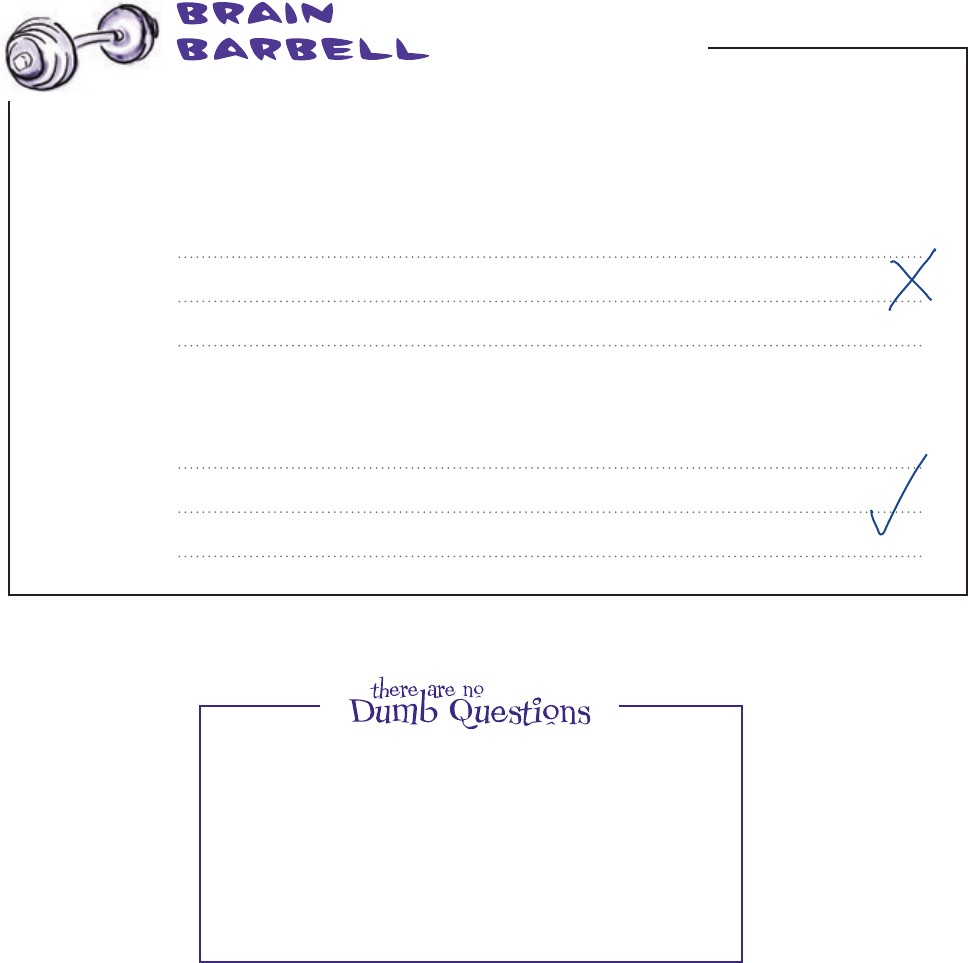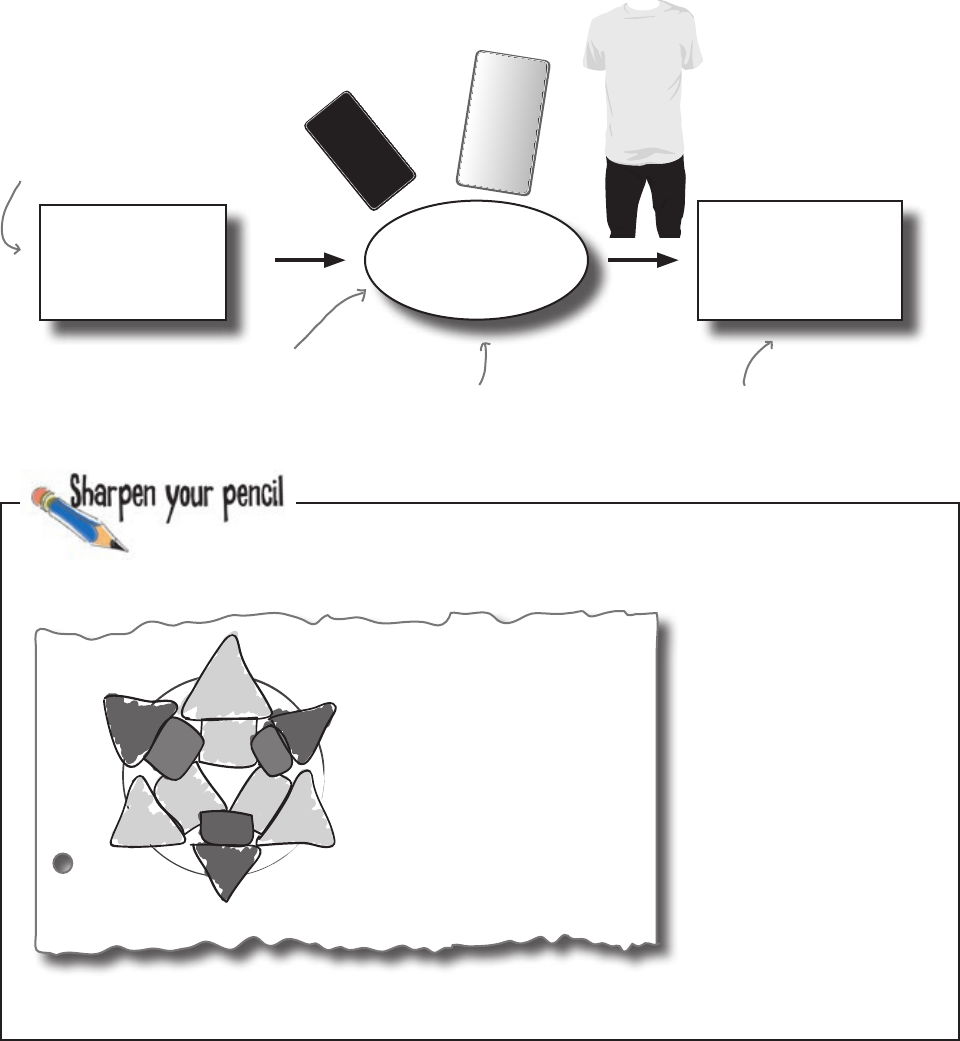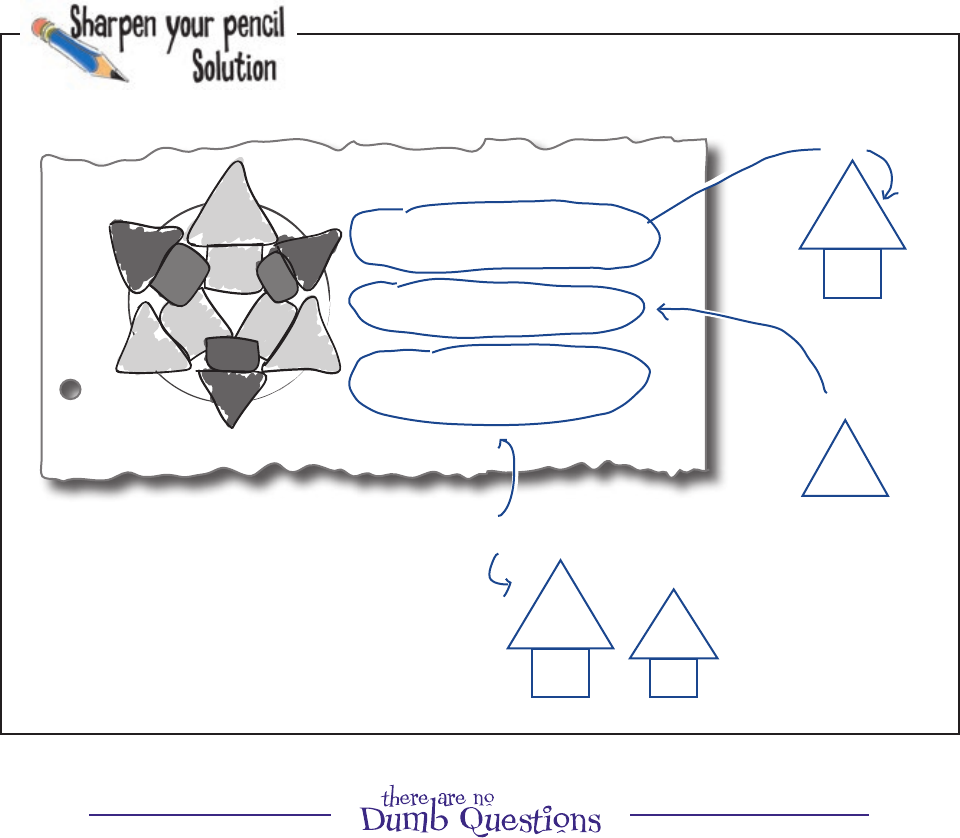
diff
er
ent sizes of gadgets.
similarity and congruence
Ratios can be more useful than sizes
A ratio captures the proportions of a shape, and
then by using a different factor, we can create a
similar shape of any size.
T
his is an important step.
T
his bi
t is easy—i
t’s jus
t
multiplica
tion or division.
By using a diff
er
ent f
ac
t
or,
her
e w
e can make the design fi
t
T
his is wha
t y
ou
need t
o
etch
wi
th.
Factor to multiply
EVERY length by
5
12
3
Diagram with
correct ratios
Diagram with
correct lengths
The notes the drummer made on the diagram tell you three
ratios—what are they? Draw sketches if it helps you figure it out.
All the arr
ows ar
e the same.
The squ
are par
t is ha
lf the
length of the arr
ow head par
t.
T
riangle sides ar
e the same.
The darker set of arr
ows ar
e
3/4 size.
you are here 4 93

sharpen solution
The notes the drummer made on the diagram tell you three
ratios—what are they? Draw sketches if it helps you figure it out.
3:4
2:1
2
1
1:1
1
1
1
3
4
All the arr
ows ar
e the same.
The squ
are par
t is ha
lf the
length of the arr
ow head par
t.
T
ria
ngle sides ar
e the same.
The darker set of arr
ows ar
e
3/4 size.
Q:
How come 1:1 is a ratio? Isn’t that a bit pointless?
A:It does sound a bit weird, doesn’t it? 1:1 is a way of
indicating that it’s exactly the same size as the original. If you
didn’t put the 1:1 in there, then someone reading your work or
diagram might wonder whether you’d forgotten to put a ratio in for
that item. 1:1 indicates clearly that it’s the same size.
Q:
The drummer wrote that the dark arrows are 3/4 size,
so why have you written it as 3:4?
A:3/4 and 3:4 are just different ways of indicating the same
relative proportion. 3/4 is fraction notation and 3:4 is ratio notation.
Unless you’ve been specifically told to use one or the other then
they’re mostly swappable.
94 Chapter 2

similarity and congruence
Uh, sorry, dude, but you’ve messed
up. You’re saying that the arrow heads
are triangles with size 3, and size 4, and
size 2…well, they can’t be ALL of them!
Jim
Joe
Frank: I kinda followed what you did though…with the
ratios, and it all makes sense.
Jim: I don’t think so, it has to be wrong. There’s no way it can
be 2 and 4, or 2 and 3…not at the same time. You need to
take another look.
Joe: That or the drummer got it wrong. They’re not always
the brightest in the band.…
Frank: Could it be something to do with it being ratios rather
than sizes? Like, I’m twice as old as my sister, but I’m also half
as old as my dad.…
Joe: And you’re half as good-looking as me. What are you
going on about? Those are both twos…we’re worried about
different numbers!
Frank: Yeah, but my dad is four times as old as my kid
sister—so, you could say their ages were 4:1, even though my
dad and I are 2:1. They’re both true; it’s just relative.
Jim: Relative to what, though?
Frank: That’s the thing—maybe we just need to choose one
thing for our ratios to be relative to and then stick with it.
Frank
you are here 4 95
Get Head First 2D Geometry now with the O’Reilly learning platform.
O’Reilly members experience books, live events, courses curated by job role, and more from O’Reilly and nearly 200 top publishers.

